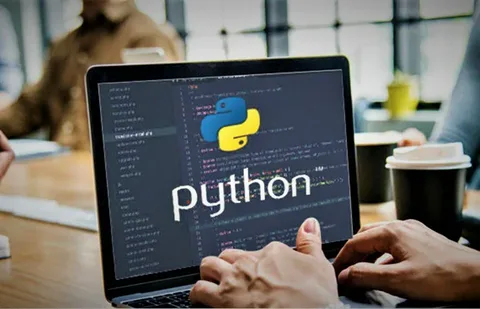Introduction to Python Application Development Services
Application Development Services encompass the entire process of creating software applications tailored to meet specific needs or solve particular problems. These services involve a collaborative effort between developers, designers, and stakeholders to conceptualize, plan, design, implement, test, and deploy software solutions. Python, as a programming language, has gained immense popularity in the realm of application development due to its simplicity, readability, and extensive ecosystem of libraries and frameworks.
Understanding Python’s Versatility in Application Development
Python’s versatility lies in its ability to adapt to various application development scenarios. Its flexibility allows developers to write code that is both concise and expressive, making it easier to maintain and understand. Python’s scalability means that it can handle projects of all sizes, from small scripts to large-scale enterprise applications. Additionally, Python boasts a rich ecosystem of libraries and frameworks that cater to diverse needs, including web development, data analysis, machine learning, and more.
The Process of Python Application Development
The process of Python application development follows a systematic approach to ensure the successful delivery of high-quality software. It begins with planning and requirement gathering, where developers work closely with stakeholders to understand the project’s objectives, scope, and constraints. Next, the design and architecture phase involves translating these requirements into a blueprint for the application’s structure and functionality. The implementation and coding phase is where developers write the actual code using Python and its associated frameworks. Finally, testing and quality assurance ensure that the application meets the specified requirements and functions correctly.
Leveraging Python Frameworks for Application Development
Python frameworks like Django and Flask provide developers with pre-built components and conventions to streamline the development process. Django, for example, offers a full-stack framework for building web applications, complete with built-in authentication, database ORM, and templating engine. Flask, on the other hand, provides a lightweight and flexible framework for smaller projects, allowing developers to pick and choose the components they need. Other Python frameworks, such as Pyramid and FastAPI, offer different trade-offs in terms of features and performance, allowing developers to choose the one that best fits their requirements.
Building Web Applications with Python
Web development with Python involves both frontend and backend components. On the frontend, developers use HTML, CSS, and JavaScript to create the user interface and enhance user experience. Python and its frameworks handle the backend logic, including routing requests, processing data, and interacting with databases. Frameworks like Django and Flask provide tools for building RESTful APIs, handling user authentication, and managing sessions, making it easier for developers to focus on building the application’s core functionality.
Developing Desktop Applications Using Python
Python isn’t limited to web development; it’s also well-suited for building desktop applications. GUI libraries like Tkinter, PyQt, and wxPython provide developers with tools for creating cross-platform desktop applications with rich user interfaces. These libraries offer a wide range of widgets and components for building interactive applications, from simple forms to complex data visualizations. Additionally, Python’s simplicity and ease of use make it an ideal choice for prototyping and iterating on desktop application designs quickly.
Python for Mobile Application Development
While Python is not as commonly used for mobile app development as languages like Swift or Java, there are still options available for building mobile apps with Python. Frameworks like Kiva and Beware allow developers to write code once and deploy it on multiple platforms, including iOS and Android. These frameworks provide tools for building native user interfaces, accessing device features, and packaging applications for distribution on app stores. While Python may not be the first choice for mobile app development, it offers a viable alternative for developers who are already familiar with the language and want to leverage their existing skills.
Integrating AI and Machine Learning into Applications with Python
Python’s popularity in the field of artificial intelligence and machine learning is unparalleled. Libraries like Tensor Flow, Porch, and sickie-learn provide developers with tools for building and training machine learning models, from simple linear regressions to complex neural networks. These libraries offer pre-trained models, algorithms, and utilities for tasks like image recognition, natural language processing, and predictive analytics. By integrating AI and machine learning capabilities into their applications, developers can unlock new possibilities for automation, personalization, and data-driven decision-making.
Ensuring Security in Python Application Development
Security is a critical consideration in application development, and Python offers several features and best practices to help developers build secure applications. By following security principles like input validation, parameterized queries, and least privilege access, developers can mitigate common security threats like SQL injection, cross-site scripting, and authentication bypass. Additionally, Python’s standard library includes modules for cryptography, hashing, and SSL/TLS encryption, making it easy to implement secure communication and data storage in applications. By staying informed about the latest security vulnerabilities and best practices, developers can ensure that their applications are protected against malicious attacks and data breaches.
Deploying and Maintaining Python Applications
Deploying and maintaining Python applications involves a combination of infrastructure, automation, and monitoring. Developers must choose the right deployment strategy based on factors like scalability, reliability, and cost. Options include traditional server-based deployments, cloud-based solutions like AWS and Azure, and containerization platforms like Docker and Kubernetes. Continuous integration and deployment (CI/CD) pipelines automate the process of building, testing, and deploying code changes, ensuring that applications are delivered quickly and reliably. Additionally, monitoring tools like Prometheus and Graafian provide insights into application performance, resource usage, and error rates, enabling developers to identify and address issues proactively.
Case Studies: Real-World Applications Developed with Python
To illustrate the power of Python in application development, let’s take a look at some real-world case studies. For example, Instagram, one of the world’s largest social media platforms, was built using Django, demonstrating the scalability and reliability of Python for handling millions of users and petabytes of data. Another example is Dropbox, a popular file hosting service, which uses Python for its backend infrastructure, client applications, and desktop sync client, showcasing the versatility of Python for building cross-platform solutions. These and other case studies highlight the success stories and best practices of using Python in real-world applications, inspiring developers to harness the full potential of the language for their own projects.
Future Trends in Python Application Development
As technology continues to evolve, so too will the landscape of Python application development. Emerging trends like blockchain, Internet of Things (IoT), and edge computing are opening up new opportunities for Python developers to innovate and create value. For example, blockchain technologies like Ethereum and Hyperedge enable developers to build decentralized applications (dApps) using Python smart contracts, while IoT platforms like Raspberry Pi and Arduino provide tools for connecting devices and collecting sensor data. Edge computing, on the other hand, brings computation closer to the data source, reducing latency and improving performance for real-time applications. By staying informed about these trends and investing in their skills and knowledge, Python developers can stay ahead of the curve and continue to deliver cutting-edge solutions for their clients and users.
Conclusion
In conclusion, Python stands as a beacon of innovation and efficiency in the realm of application development. Its simplicity, versatility, and extensive ecosystem of libraries and frameworks make it the go-to choice for developers worldwide. From web applications to desktop software, from mobile apps to cutting-edge AI solutions, Python empowers developers to bring their ideas to life with ease.
By harnessing the power of Python, developers can unlock endless possibilities and overcome even the most complex challenges. Its intuitive syntax and rich set of tools allow for rapid development without sacrificing quality or scalability. Moreover, Python’s thriving community and vast resources ensure that help and support are always within reach, fostering collaboration and growth.
As technology continues to evolve, Python remains at the forefront, adapting to new trends and embracing emerging technologies. Whether it’s blockchain, IoT, or edge computing, Python is poised to lead the way, driving innovation and shaping the future of application development.
So, whether you’re a seasoned developer or just starting out on your coding journey, embracing Python for your application development needs is a decision you won’t regret. With Python by your side, the possibilities are limitless, and the journey ahead is filled with endless opportunities for creativity, growth, and success. So, what are you waiting for? Embrace the power of Python and unlock your full potential today.




